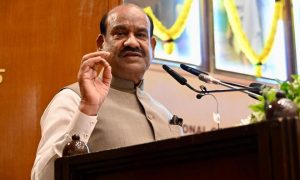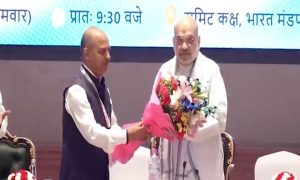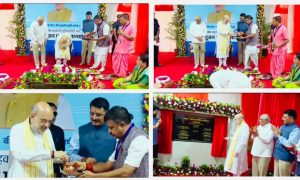A group of astronomers from the National Centre for Radio Astrophysics (NCRA), Pune, has discovered eight stars belonging to a rare class called ‘MRPs’ or Main-sequence Radio Pulse emitters using the Giant Metrewave Radio Telescope (GMRT) located near Pune.
It is noteworthy that the discovered rare class of radio stars are hotter than the Sun along with unusually strong magnetic fields and even stronger stellar wind.
The group of scientists, led by astronomers from NCRA, said that they had also discovered three more such stars in the past using the GMRT. Thus, taking the total to 15 MRPs known so far, 11 were discovered with the GMRT, of which eight were discovered in 2021 alone.
A research paper on these findings
All these new discoveries have been described in a research paper, which has been accepted for publication in the Astrophysical Journal.
Barnali Das, who is the lead author of the paper, has recently completed a PhD, working under the supervision of Prof Poonam Chandra at the NCRA’s Tata Institute of Fundamental Research, Pune.
Notably, Barnali Das and Prof Chandra have been actively involved in several projects aiming at the characterisation of this little-known class of MRPs.
Deciphering MRPs rare Stars and the role of GMRT
Discovered for the first time in the year 2000, MRPs are stars hotter than the Sun with unusually strong magnetic fields, and even exponential stellar wind. Due to their characteristics, they emit bright radio pulses like a lighthouse.
The success of discovering such rare stars can be linked to the high sensitivity of upgraded Giant Metrewave Radio TelescopeIt (uGMRT), as it has the ability to provide high-resolution pictures which enables the recovery of the pulsed signal from the different types of radiation coming from the sky.
The fact that the radio pulses are visible only at certain times, and the phenomenon is mostly observable at low radio frequencies, this is the frequency range where the uGMRT stands out as the most sensitive telescope in the world.
The telescope allowed the scientists to find that the magnetic field and temperature are two quantities that play an imperative role in deciding how intense the radio pulse will be.
Further, these findings will be crucial in grasping what switches off the production of radio pulses in a hot magnetic star.
Located at Khodad, 80 km away from Pune, the GMRT is a radio telescope operating over 150-1420 MHz. It consists of 30 antennas, each of 45m diameter, and is operated by the National Centre for Radio Astrophysics of the Tata Institute of Fundamental Research (NCRA-TIFR).
Interestingly, to understand the properties of these rare stars, the researchers have performed the most extensive study of MRPs over an ultra-wide frequency range, using the world’s leading radio telescopes such as the GMRT and the US-based Karl G Jansky Very Large Array (VLA).
What’s inside the radio pulses emitted by MRPs
The findings by the astronomers have shown that the radio pulses emitted by MRPs contain a vast amount of information regarding the stellar magnetosphere ( a space region surrounding an astronomical object).
“The pulsed radio emission from MRPs are the only visible signatures of the theoretical models which predict tiny explosions in magnetic massive stars which occur at specific locations in the magnetosphere of the star. These explosions have been predicted to play an important role in regulating the transport of wind materials surrounding the star, and are likely to affect the stellar evolution as well,” said lead author Barnali Das.
He further asserted that “ the radio pulses produced by MRPs are the only probes that are sensitive enough to reflect the changes incurred by these relatively weak events. Further experiments are underway to characterize these changes in pulse-behavior so as to be able to use the radio pulses to study the dynamic stellar magnetospheres.”




























 WhatsApp us
WhatsApp us